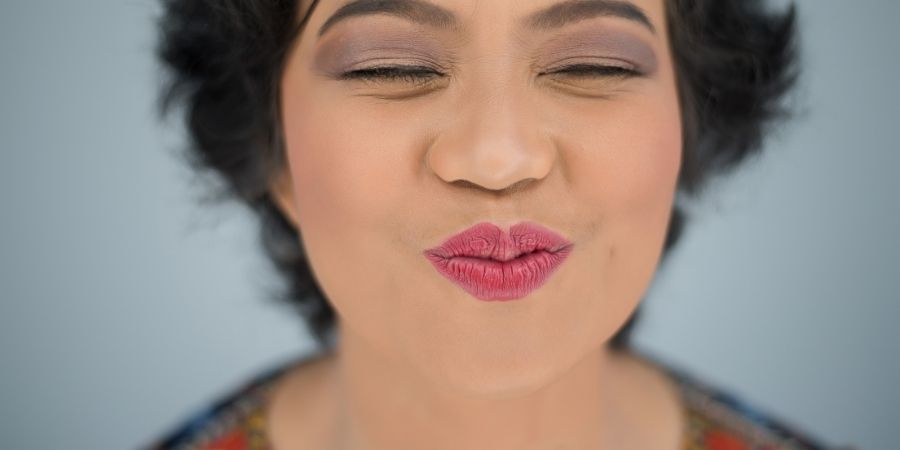Since 2010 Botox injections have been successfully used to treat chronic migraines in adults. It is safe and provides relief from migraine headaches for about 3 months. Today we are going to cover some of the common questions about Botox for migraines.
Botox Cosmetic Vs. Botox Therapeutic
You are probably familiar with Botox Cosmetic and its use in reducing the appearance of facial wrinkles and fine lines as approved by the FDA in 2002. The injection works by paralyzing the muscles that produce repetitive movements when we laugh or smile, etc.
This medication is created using botulinum toxin and works as a temporary solution for not only wrinkles but if you suffer from migraine headaches and experience them often, you may be interested to know that onabotulinum toxin A also known as Botox Therapeutic is also effective to help relieve migraine headaches.
In 2010, the FDA approved Botox for use in treating adults with migraine headaches, and for the past 11 years has helped many patients lead more productive lives.
Video: Botox Injections in Atlanta, GA
Doctors Begin Studying Botox’s Ability to Stop Migraine Pain
Doctors discovered that Botox could help manage migraine pain by coincidence while treating their patients’ wrinkles. Patients that were plagued by chronic migraines, currently being treated for wrinkles, began reporting to their doctors that they were experiencing fewer migraines which prompted additional research.
How Does Botox Stop Migraine Pain?
Although the specifics are not entirely understood, experts feel that the injected Botox is introduced into the pain receptors in the nerves of the muscles deactivating them and blocking the pain signals being sent to the brain effectively alleviating the pain associated with the headaches.
Who Is A Candidate For Botox Treatment For Migraines?
You are a candidate for treatment with Botox if you have both a history of chronic migraine headaches and experience more than 15 days of headaches a month including tension headaches and 8 of those headaches are migraines.
Where Do They Inject Botox When Treating Migraines?
There are 7 specific muscle areas around the head where the Botox is injected to help prevent migraine headaches from forming. Each treatment will probably involve about 31 injections across these 7 sites which include, the temples, the neck, the forehead, the bridge of the nose, the back of the head, and the shoulder blades.
Learn about other Injectable Treatments available at IBI Plastic Surgery & Med Spa.
How Long Does It Take The Botox To Stop Headache Pain?
During a study, adult patients who were chronic migraine sufferers reported that after the initial shots of Botox, the total number of days they had headaches was noticeably reduced, they even experienced days of no pain at all and missed fewer days of work. Most patients reported that the injections started working after about 2 weeks.
In a separate study, approximately 50% of the participants who had two rounds of Botox shots within 6 months reported experiencing only half the number of headaches than before they began treatment, however, that number jumped to 70% of the participants after 5 rounds of treatment.
Is Botox A Permanent Solution?
The Botox injections are not a permanent solution and last about 2 ½ months. According to the American Headache Society, the national standard in treating migraines with Botox injections is every 3 months. Some individuals require an additional form of headache treatment for that interim two weeks.
Botox alone helps many people alleviate their chronic headache pain but others require additional medications.
Does Insurance Cover Botox Injections?
Insurance does not cover Botox injections when they are used for cosmetic purposes. However, if treating a medical condition such as chronic migraines, they will often cover the expense as long as certain criteria are met.
Typical criteria are the patient must have experienced 15 headaches a month with at least 8 of those headaches being migraines for at least 3 consecutive months. Botox can produce very harmful side effects if not administered properly so it must be done by a doctor specifically trained in use for migraines.
What Are Side Effects of Botox for Migraines?
Swelling or bruising at the injection sites are the most common side effects reported. More severe, but rare side effects may include:
- Leaching into nearby tissues causing:
- Droopy eyelids;
- Displaced eyebrows;
- Dry eyes or excessive tearing.
- Spreading to other parts of the body and interfering with:
- Speaking;
- Swallowing;
- Breathing;
- Vision;
- Muscle functions (weakness).
Will Using Botox For Migraines Also Help Wrinkles?
Botox Cosmetic and Botox Therapeutic are virtually the same composition. However, the difference is in the way they are used and the placement of the injections. Using Botox to treat fine lines and wrinkles is considered a cosmetic application and injections are strategically placed to paralyze the muscles accordingly.
Using Botox as a treatment for migraines does not target “cosmetic areas” but rather specific areas that will help alleviate pain from muscle nerves. That being said, it may serendipitously help alleviate wrinkles and fine lines in certain locations.
If you want to learn more about migraine treatment with Botox or confirm our eligibility, please, schedule a consultation with Dr. Angelina Postoev.
Angelina Postoev, MD, FACS, a triple-board certified cosmetic surgeon, and Christopher Ibikunle, MD, FACS, offer Botox treatments to patients in Lawrenceville, Suwanee, Johns Creek, Buckhead, and the surrounding areas of Atlanta, Georgia.
- How Long Do Botox, Juvederm, Radiesse, and Restylane Last?
- Are There Any Botox Alternatives to Fight Wrinkles without Injections?
- Botox Vs. Fillers: Frequently Asked Questions
- What’s the Difference between Botox for Men and Botox for Women?







